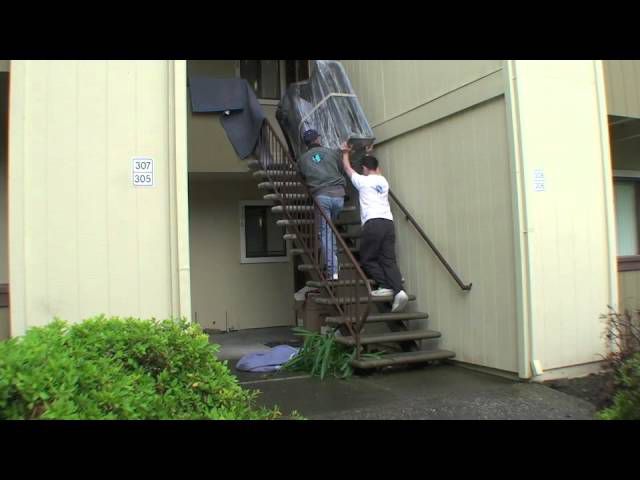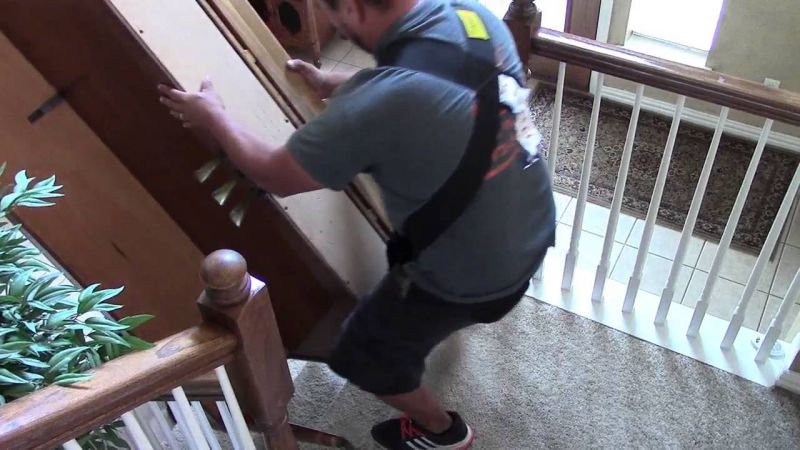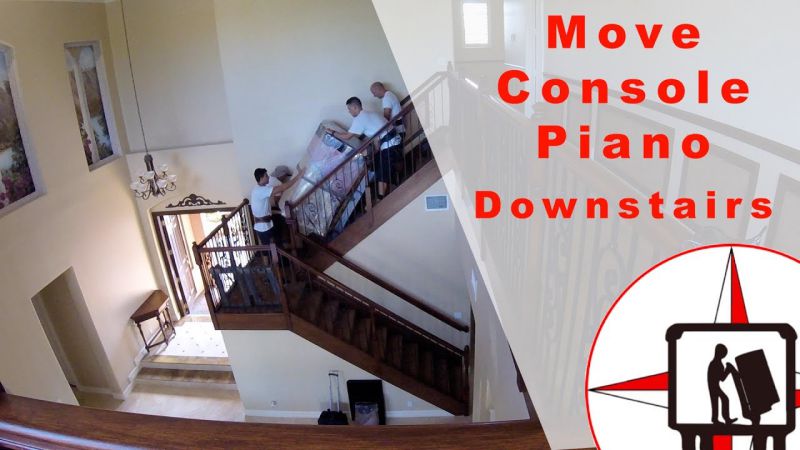Moving a piano can be a difficult and stressful task, especially when you have to take it down stairs. While many people opt to hire specialty movers, it’s possible to do it yourself with the right preparation and equipment. This includes a hand truck, furniture dolly, furniture blankets, and ropes or straps to secure the piano.
To ensure a safe and successful move, it’s important to follow proper techniques. This includes keeping the pathway clear, communicating effectively with your helper, and securing the piano properly with ropes or straps.
In this blog post, we will provide you with a step-by-step guide on How To Move A Piano Down Stairs. From the necessary equipment to tips on proper techniques, we will help make your piano moving experience as smooth and stress-free as possible. Let’s get into the further details! Want to learn piano click here
Jump To Heading
Safely Move Your Piano Down Stairs: A Step-by-Step Guide
Moving a piano is a challenging task, and moving it down stairs can be even more difficult. However, with the right equipment and preparation, it can be done safely and efficiently. Here’s what you need to know about moving a piano down stairs.
Essential Equipment That You Need To Use:
Having the proper equipment on hand is crucial for a successful piano move, especially when stairs are involved. The following items are necessary for moving a piano up or down stairs:
- Moving blanket
- Dolly
- Heavy-duty gloves
- Moving straps
- Packing or duct tape
It’s important to gather all of these items before the moving day to ensure a smooth and safe process. Without the proper equipment, you may put yourself at risk of injury and make the move much more difficult.
Safety Tips:
Moving a piano down stairs can be dangerous, so it’s important to take precautions to stay safe.
- Move slowly and carefully to avoid accidents
- Always have at least two people assist with the move to prevent injury
- If you’re unsure about the process, consider hiring professional movers for assistance.
- Wear heavy-duty gloves to protect your hands from cuts and blisters
Moreover, moving a piano down stairs requires careful planning and preparation, but with the right equipment and following the steps outlined above, it can be done safely and efficiently.
Related Posts:
How To Move A Piano Down Stairs Without Problem?
Moving a piano, especially down stairs, requires a lot of preparation and caution to ensure that the process is safe and smooth.
Step 1: Figure Out Your Route
Moving a piano can be a daunting task, but with proper planning and preparation, you can ensure a smooth and stress-free experience. One of the most important things to consider before the move is mapping out your route.
This includes paying close attention to doorways, turns, and especially tight turns on stairs. To avoid any unexpected obstacles, it’s crucial to measure the width of the doorways and compare it to the size of the piano and dolly.
If the doorways prove to be too narrow, you may need to consider removing doors or finding an alternate route. Having a solid plan in place helps you anticipate potential challenges before they arise, giving you peace of mind and reducing the likelihood of any damage to your prized piano.
Step 2: Prepare the Stairs
Moving a piano can be a complex and delicate task, and one of the most challenging aspects is descending the stairs. The sudden drop from one stair riser to the next can pose a risk to both the piano and those handling it. But with careful planning and the right equipment, you can make this process a breeze.
One of the best solutions for moving a piano downstairs is to create a ramp using sturdy plywood planks. These planks are strong enough to support the weight of a piano and provide a smooth surface for it to glide over. When purchasing the planks, make sure to communicate your intentions to the seller, so they can recommend the best product for the job.
To ensure the ramp fits your staircase perfectly, measure the length and width of each step before purchasing the planks. Once you have the right size, you can then arrange the planks end-to-end along the length of the staircase and secure them in place using duct tape, screws, or nails.
This ramp solution not only protects your piano from damage but also provides a safer and more controlled descent for those handling it. By taking the time to create a ramp, you’ll have peace of mind that your piano will arrive at its destination in the same condition it left. Make your piano moving experience a success by utilizing the power of plywood planks.
Step 3: Secure the Piano to the Dolly
Preparing your piano for transport requires careful attention to detail to ensure its safety and protection during the moving process. Here are the steps to follow to properly prepare your piano for transport:
- Close the Lid: Start by closing the lid over the keys and securing it in place with tape. This will protect the keys and internal components from damage during transport.
- Wrap the Piano: Next, cover the entire piano with moving blankets to provide additional protection. Secure the blankets in place with packing or duct tape.
- Lifting Techniques: To hoist the piano onto the dolly, grip it just under the keyboard or hold the moving handle in the back. It’s important to follow proper lifting techniques to prevent injury. Make sure to keep your spine alignment neutral, bend at the knees, and lift close to your body.
Step 4: Move the Piano
Once the piano is safely attached to the dolly, it’s time to relocate it to the moving truck. Ensure a clear path to the exit by clearing any obstacles such as furniture or boxes. Assign a team of three individuals, one to pull the piano on its dolly, another to push from the opposite end, and a third to walk beside the piano to maintain stability.
When approaching the staircase, descend slowly and deliberately, taking small steps and constantly communicating with your moving partners. Once the piano reaches the bottom landing, level it out before loading it into the truck.
Frequently Asked Questions
Q. How do I prepare my piano for moving down stairs?
Ans.Preparation is key when moving a piano down stairs. First, remove any loose items such as pedals and music stands.Next, have at least 4-6 people available to help you with the move, as well as sturdy furniture dollies and straps to secure the piano to the dollies.
Q. How do I maneuver a piano down stairs?
Ans. Start by positioning the piano on the furniture dollies and securing it with moving straps. Have at least two people on each side of the piano to guide it down the stairs, and one person at the bottom of the stairs to help guide it to its final location. If the staircase is steep, you may need to use a stair-climbing dolly to help move the piano safely. Go slowly and avoid sudden movements, as this can cause the piano to lose balance and potentially fall.
Q. What equipment is needed for moving a piano down stairs?
Ans.You will need several pieces of equipment to safely move a piano down stairs. This includes furniture dollies, moving straps, padding or moving blankets, and a stair-climbing dolly if available. It’s also helpful to have hand trucks, wheeled appliances dollies, or 4-wheel moving carts on hand to make the move smoother.
Closing Thoughts
It’s important to gather a team of strong and experienced movers, as well as the proper equipment such as dollies, moving straps, and furniture pads. Communication and coordination among the team are crucial for a successful How To Move A Piano Down Stairs operation.
Additionally, ensuring a clear and safe path for the piano, and taking necessary measures such as securing loose objects and removing obstacles, will make the process smoother. With proper planning and execution, you can successfully How To Move A Piano Down Stairs without causing any damage to the piano or surroundings.


